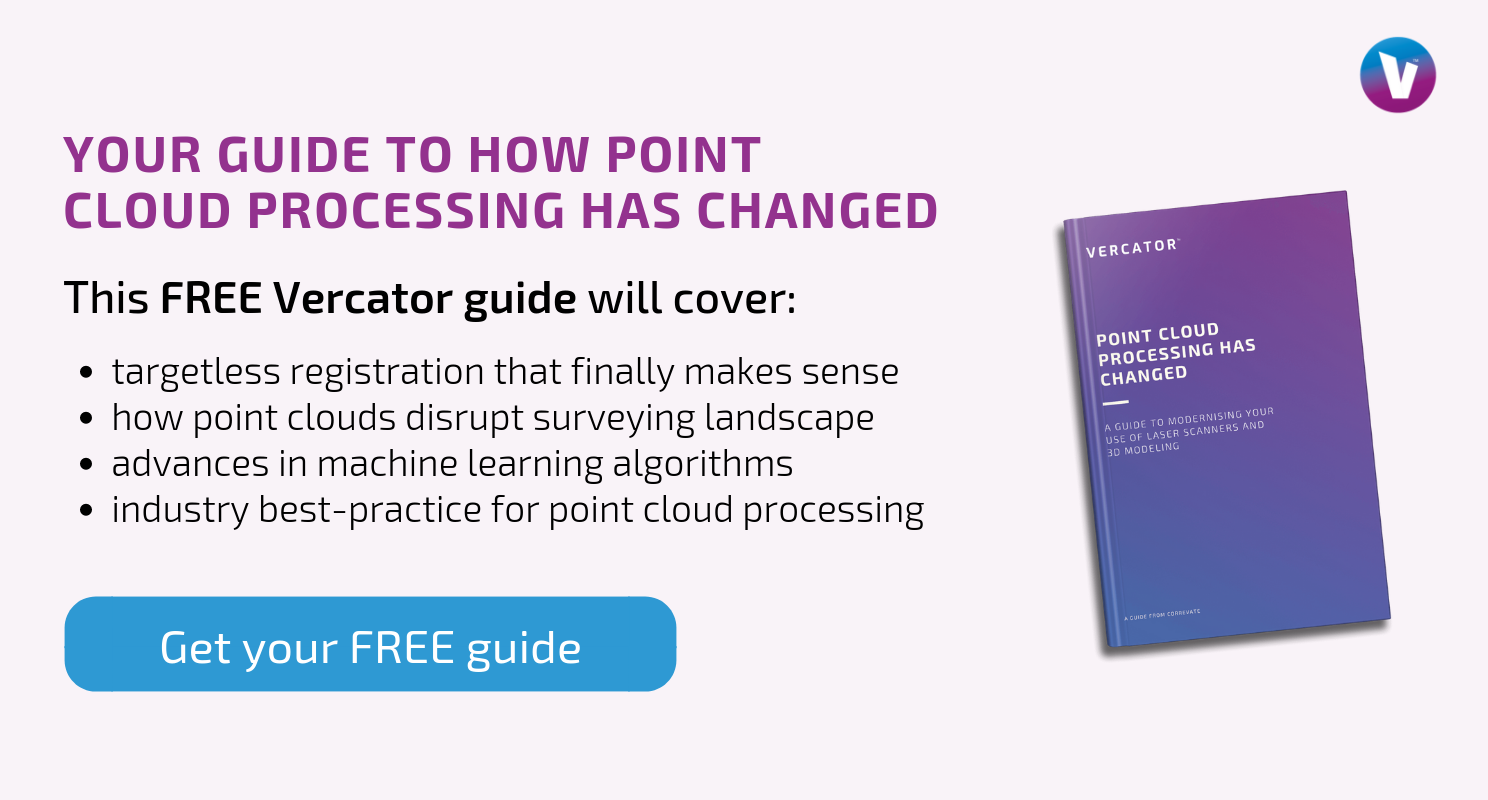5 ways to gain a competitive advantage with point clouds

Point clouds allow for the easy storage and manipulation of vast data sets mapping 3D space. This delivers information, improves decision-making, optimises workflows and aids communication. Digital design processes can be brought into direct touch with physical space, and collaborative digital environments can be developed to aid long-distance project coordination. These capabilities provide opportunities to cultivate a competitive advantage for those willing to embrace this rapidly evolving technology. Here, we will explore 5 ways point clouds can improve your business and give you a leg up over your competitors.
1. Point clouds deliver more information
Point clouds create a complete database of information about a physical space or object. Under circumstances where physical measurements are needed, point clouds supply a level of detail that is second to none at a level of convenience that is hard to beat.
A contractor, for example, could scan an entire building intended for renovation. Rather than having to determine which measurements are needed prior to making plans, undertaking a point cloud survey can deliver every conceivable measurement and allow for its selective assessment at the office.
Point clouds enable planning to be undertaken with less site visits by fewer people, optimising time spent on location through detailed off-site access to on-site information. If plans change, new measurements can be taken digitally via the already captured point cloud data. This level of information improves efficiency and creates a more simplified workflow, allowing fewer people to work more projects.
2. Point clouds improve communication
Point clouds are a digital information source that can be easily shared across locations and devices. The sheer amount of information they contain makes that shareability a valuable asset. Point clouds can be transformed into intuitively viewable 3D models and then used to coordinate long-distance team communication as if everyone was in the same location. There is no need to create different schematics to be shared across teams as everyone can access all of the data.
Design teams, for example, can discuss iterations and alterations while each member views a 3D model based on the exact physical space or object under discussion. Point cloud data and 3D models can be scaled for size and detail, improving the easy of shareability across devices and networks with different capabilities. This allows teams of all sizes to operate more efficiently across greater distances.
3. Point clouds enable iterative design
One of the greatest assets of a point cloud is the ability to bring 3D models in touch with physical reality. A point cloud can either form the basis of a model (which can be done to plan the foundations of a construction project or make alterations to an existing product) or compare production to planning.
This allows for iterative and exacting design processes. 3D models have been adopted across design teams because they allow for the collaborative contribution to design plans in a digital environment where there is a reduced cost to experimentation. 3D models also offer a stable platform for the deployment of simulation software that can further test the validity of designs. Structural weakness can be found, new materials experimented with and an innovative design process embraced.
All of this enables more creative, efficient and stable designs at lower cost. This delivers a powerful competitive advantage for construction teams, machine manufacturers or even set designers and boutique clothing stores.
4. Point clouds keep construction projects to plan
The construction industry was one of the first to make heavy use of point clouds. The information, modelling and communication capabilities point clouds deliver are all amplified in the complex and team-oriented environment of construction.
Most modern construction projects use 3D modelling and point cloud surveys during some stage of development. What is less common is to undertake point cloud scans throughout the construction process in order to compare each stage against digital planning. This is an option that has been opened up by the depreciation in cost of point cloud commissions as the market has matured. However, it is a powerful tool to avoid the cost of errors expanding as layers are built on top of problems. This saves costs in the event of failure and improves quality upon delivery.
5. Point clouds create engaging presentations
Point clouds are most often used to form the basis of 3D models. This is a powerful tool for any designer looking to pitch a project. Just as 3D models can improve team communication over distance, they are the most compelling and intuitive way to convey an idea to a client.
A construction or renovation team can use a point cloud to build a detailed 3D model of what they intend to deliver and then allow the client to explore it on their own. This technology can be partnered with virtual reality (VR) to create the ultimate immersive experience. If two companies are pitching similar projects at similar price points, an impressive presentation can make the difference between success and failure.
BONUS: Point cloud producers can gain a competitive advantage by embracing the cutting edge of point cloud processing
Point clouds deliver many advantages to those who use them to aid their design process and project management. Advances, however, have created distinctions in how point clouds are processed and generated -- offering a competitive advantage to users of point cloud (surveyors, civil engineers, structural engineers etc.) who embrace the cutting edge of point cloud technology.
Point clouds are generally composites of dozens, if not hundreds or thousands of individual scans. To do this precisely, a delicate registration process is required to ‘fix’ each scan in a common context. Traditionally, this has been the hardest, longest and most costly step in the process of point cloud generation.
A new breed of processing software using vector-based, multi-stage alignment processes is significantly reducing processing costs. It has allowed for automated ‘targetless registration’. This not only accelerates processing, it automates procedures both in the field and in the office. Point cloud producers that embrace this technology be able to deliver point clouds more effectively. The ability to produce point clouds more efficiently is amplifying their ability to supply a competitive advantage across a wide number of industries and sectors.
Tags: point clouds

